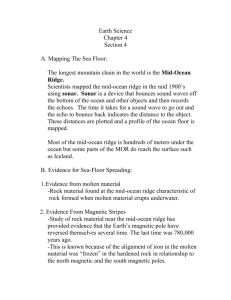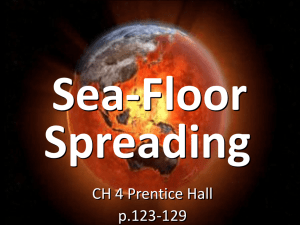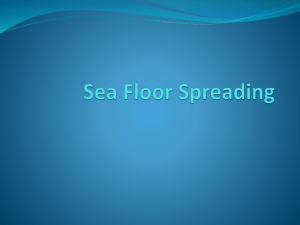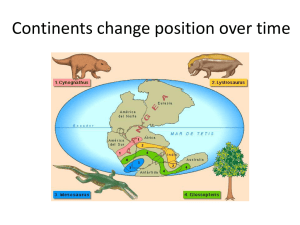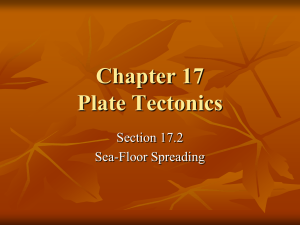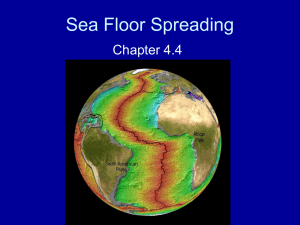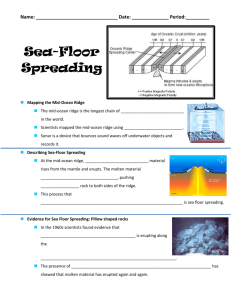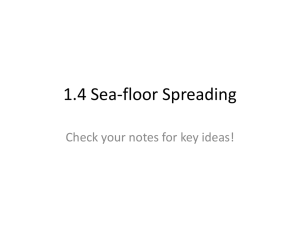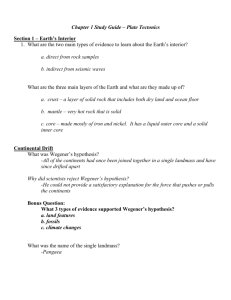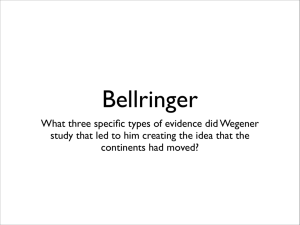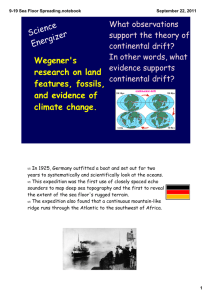Name Date
advertisement
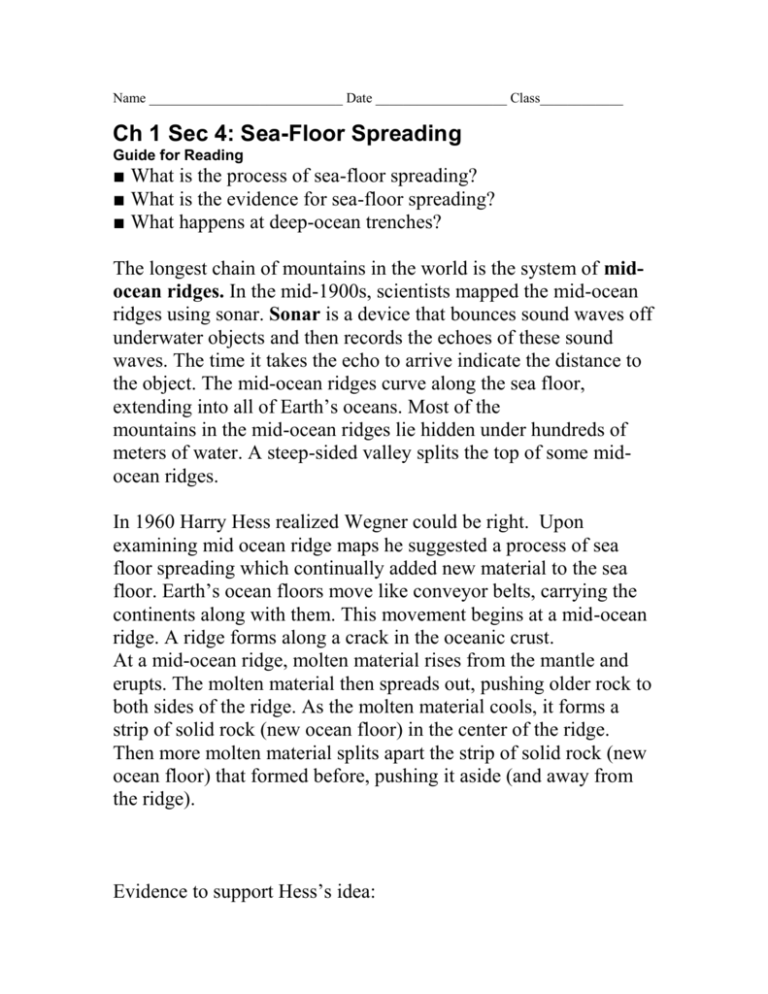
Name ____________________________ Date ___________________ Class____________ Plate Tectonics Ch 1 Sec 4: Sea-Floor Spreading Guide for Reading ■ What is the process of sea-floor spreading? ■ What is the evidence for sea-floor spreading? ■ What happens at deep-ocean trenches? The longest chain of mountains in the world is the system of midocean ridges. In the mid-1900s, scientists mapped the mid-ocean ridges using sonar. Sonar is a device that bounces sound waves off underwater objects and then records the echoes of these sound waves. The time it takes the echo to arrive indicate the distance to the object. The mid-ocean ridges curve along the sea floor, extending into all of Earth’s oceans. Most of the mountains in the mid-ocean ridges lie hidden under hundreds of meters of water. A steep-sided valley splits the top of some midocean ridges. In 1960 Harry Hess realized Wegner could be right. Upon examining mid ocean ridge maps he suggested a process of sea floor spreading which continually added new material to the sea floor. Earth’s ocean floors move like conveyor belts, carrying the continents along with them. This movement begins at a mid-ocean ridge. A ridge forms along a crack in the oceanic crust. At a mid-ocean ridge, molten material rises from the mantle and erupts. The molten material then spreads out, pushing older rock to both sides of the ridge. As the molten material cools, it forms a strip of solid rock (new ocean floor) in the center of the ridge. Then more molten material splits apart the strip of solid rock (new ocean floor) that formed before, pushing it aside (and away from the ridge). Evidence to support Hess’s idea: 1. Evidence from Molten material: Using Alvin, a small submarine built to resist the crushing pressure 4 km down in the ocean, scientists have found strange rocks shaped like pillows in the central valley of mid-ocean ridges. Such rocks can form only if molten material hardens quickly after erupting under water. The presence of these rocks supports the theory of sea-floor spreading. 2. Evidence from Magnetic stripes: More support came when scientists discovered that the rock that makes up the ocean floor lies in a pattern of magnetized “stripes.” The pattern is the same on both sides of the ridge. These stripes hold a record of reversals in Earth’s magnetic field. The last reversal happened 780,000 years ago where compasses point north. The next switch will have compasses pointing south. The rock in the ocean floor contain iron. The rock began as molten material that cooled and hardened. As the rock cooled, the iron bits inside the rock aligned in the direction of Earth’s magnetic poles. They were “locked in” giving the rock a permanent “magnetic memory”. 3. The final proof of sea-floor spreading came from rock samples obtained by the Glomar Challenger, a vessel built in 1968 drilled 6 km into the ocean floor. Scientists found that the rock taken farther from a ridge were older than rocks next to the ridge. The ocean floor does not just keep spreading. Instead, it sinks beneath deep underwater canyons called deep-ocean trenches. Where there are trenches, subduction takes place. Subduction is the process by which the ocean floor sinks beneath a deep-ocean trench and back into the mantle. At deep-ocean trenches, subduction allows part of the ocean floor to sink back into the mantle, over tens of millions of years. The processes of subduction and sea-floor spreading can change the size and shape of the oceans. Because of these processes, the ocean floor is renewed about every 200 million years. The Pacific Ocean is shrinking. Its many trenches are swallowing more ocean crust than the mid-ocean ridge is producing. The Atlantic Ocean is expanding. The Atlantic has only a few short trenches, as a result the sea floor has no place to go. In most places, the oceanic crust of the Atlantic Ocean is attached to continental crust. As the Atlantic’s floor spreads, the continents along its edges also move.
